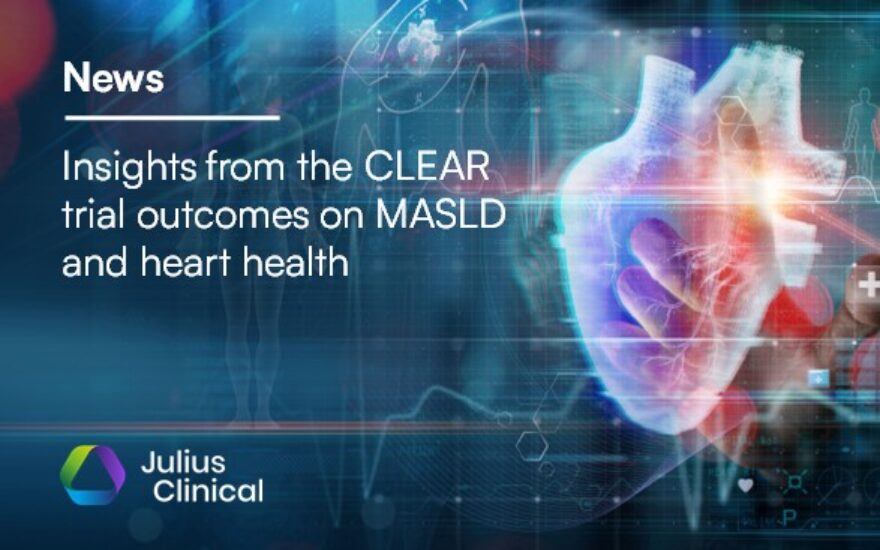GRIPonMASH received significant EU funding to improve prevention and care of Metabolic dysfunction-Associated SteatoHepatitis (MASH)

Utrecht, The Netherlands, 05-02-2024
GRIPonMASH, a newly founded consortium consisting of 27 European institutions and companies, has bundled resources to bring about a transformational change in the detection and treatment of Metabolic Dysfunction-Associated Steatotic Liver Disease (MASLD). Supported by the Innovative Health Initiative Joint Undertaking (IHI JU), the consortium will focus on developing the GRIPonMASH Diagnostic Platform which will allow early detection of patients with MASH, better patient stratification and personalized lifestyle advice.
Thirty percent of the world population suffers from Steatotic Liver Disease of which MASLD is one of the clinical presentations. Of these patients, about one in five will develop MASH, an advanced stage of MASLD in which liver inflammation occurs and the liver becomes severely damaged. Moreover, five percent will develop fibrotic MASH (liver scarring). Whilst MASLD is reversible, MASH and especially fibrotic MASH lead to irreversible complications and could even lead to liver decompensation or liver cancer. It is expected that by 2030, MASH will be the leading cause of liver transplants worldwide. Early detection of the disease is vital to ensure that the burden on care is lowered, and that patients can recover from MASH before it becomes chronic or even fatal.
The consortium
The consortium consists of 27 parties from all over Europe. They will be working closely together for the next four years to ensure the success of GRIPonMASH. The research was initiated by Julius Clinical, a spin-out of the University Medical Center Utrecht (UMCU) in the Netherlands. Together with UMCU and Echosens, they will be coordinating the project.
The GRIPonMASH platform
The 26-million-euro project will address the unmet public health need of reducing disease burden and comorbidities associated with MASLD by designing and optimizing a sustainable and scalable GRIPonMASH diagnostic platform. The platform will provide:
- Screening, diagnosis, management and long-term follow-up of MASH high-risk patients to ensure early detection
- Development of decision support tools and testing of existing and novel biomarkers for the detection of MASH patients through artificial intelligence-based decision support tools
- Development of non-invasive alternatives to diagnostic liver biopsies
- Assessment and personalization of lifestyle advice based on factors like physical activity, diet, sleep, smoking, alcohol consumption, and perception of stress
“We believe that by creating early detection and diagnosis of MASH, we can improve many lives. Not just patients that go undiagnosed and only find out when it’s too late, but also healthcare professionals who can now focus on early treatment through proven lifestyle interventions”, said Prof. Dr. Manuel Castro Cabezas, scientific director and (together with Prof. Dr. D.E. (Rick) Grobbee) co-founder of GRIPonMASH.
“To be able to early detect and diagnose MASH, we need clear tools to diagnose and solid information for primary and secondary healthcare providers but also for patients. MASH is a disease caused by lifestyle and can luckily be reversed by changing habits. If we make sure this happens sooner, we can prevent a lot of unnecessary harm”, said Prof Oscar H. Franco, MD Principal Investigator of GRIPonMASH.
For questions, please contact:
Project Management Office – info@griponmash.eu
This project is supported by the Innovative Health Initiative Joint Undertaking (IHI JU) under grant agreement No 101132946. The JU receives support from the European Union’s Horizon Europe research and innovation programme and COCIR, Efpia, EuropaBio, MedTech Europe, Vaccines Europe and Mercodia Aktiebolag, Metadeq Limited and Julius Clinical Research BV. Funded by the European Union, the private members, and those contributing partners of the IHI JU.
Views and opinions expressed are however those of the author(s) only and do not necessarily reflect those of the aforementioned parties. Neither of the aforementioned parties can be held responsible for them. www.ihi.europa.eu
Related news
Cardiovascular risk in elderly with obesity and liver fibrosis: Benefits of statins
Commentary by Dr. Marco Alings, MD PhD, Amphia Ziekenhuis, Breda; WCN, Utrecht; Scientific Officer at Julius ClinicalThere is a strong association between age, obesity, liver fibrosis and cardiovascular (CV) disease, particularly in the conte...
Insights from the CLEAR trial outcomes on MASLD and heart health
At Julius Clinical, we are collaborating with Esperion to dive deeper into the findings of the CLEAR trial outcomes. Our focus? Investigating the relationship between metabolic dysfunction-associated steatotic liver disease (MASLD) and cardiovascu...
Metabolic dysfunction associated steatotic liver disease and the heart
Commentary by Dr. Marco Alings, MD PhD, Amphia Ziekenhuis, Breda; WCN, Utrecht; Scientific Officer at Julius ClinicalThe estimated prevalence of Metabolic Dysfunction Associated Steatotic Liver Disease (MASLD) in the adult population is 31% ...



